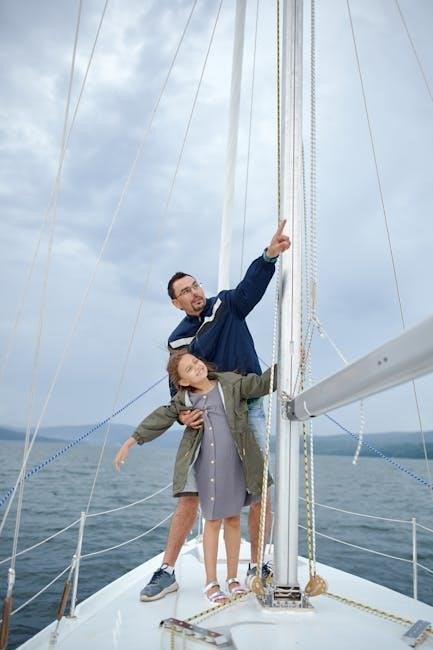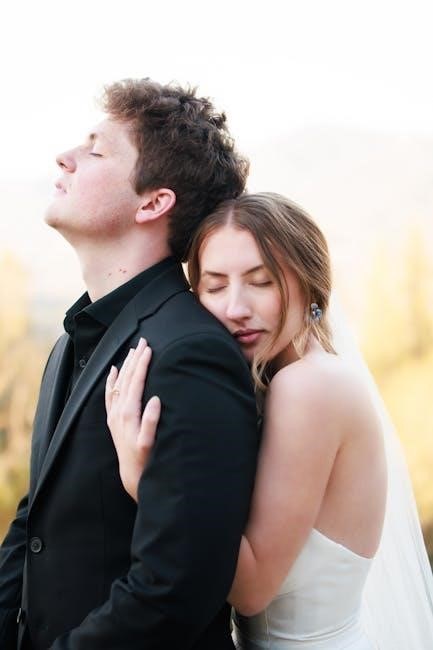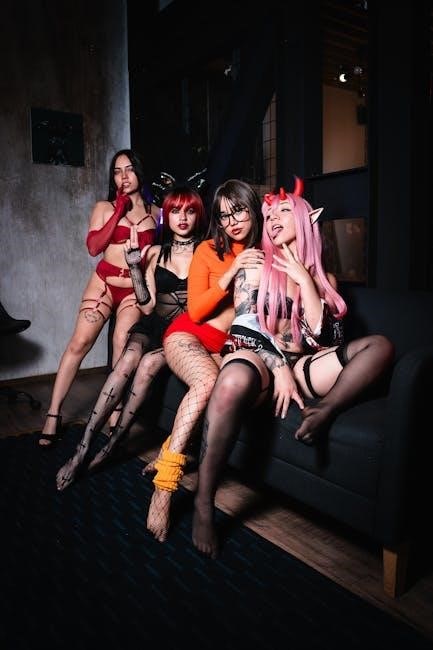Cooks Essentials Air Fryer Manual: A Comprehensive Guide
This manual provides detailed instructions for your Cooks Essentials air fryer, covering setup, operation, cleaning, and troubleshooting for optimal cooking results.
Explore preset cooking settings, food preparation tips, and advanced features to unlock the full potential of your versatile appliance, ensuring perfectly fried delights.
Welcome! Your Cooks Essentials Air Fryer is a versatile appliance designed to deliver the delicious taste of fried food with significantly less oil. This innovative kitchen tool utilizes rapid air circulation technology to cook a wide variety of your favorite dishes, from crispy french fries and succulent chicken to perfectly baked cakes and desserts.
This air fryer offers a healthier alternative to traditional deep frying, allowing you to enjoy guilt-free versions of your beloved meals. With its user-friendly controls and preset cooking functions, achieving professional-quality results is easier than ever. The manual will guide you through each step, ensuring a seamless and enjoyable cooking experience.
Prepare to rediscover your favorite recipes and explore new culinary possibilities with your Cooks Essentials Air Fryer – a smart and convenient addition to any kitchen!
Understanding the Components

Your Cooks Essentials Air Fryer consists of several key components working together to deliver exceptional cooking performance. The primary elements include the cooking unit itself, housing the heating element and fan, and the removable cooking basket and pan. These are designed for easy cleaning and food placement.
The control panel features intuitive buttons for power, temperature adjustment, timer settings, and preset cooking functions. Pay attention to the air vents located on the top and back of the unit; these are crucial for proper air circulation. Familiarize yourself with each part to ensure safe and efficient operation.
Understanding these components will help you maximize the air fryer’s capabilities and maintain it properly for years of reliable use. Refer to the diagrams within this manual for a visual guide to each part.
Safety Precautions

Prioritizing safety is paramount when operating your Cooks Essentials Air Fryer. Always ensure the unit is placed on a stable, heat-resistant surface away from flammable materials. Never immerse the cooking unit, cord, or plug in water or other liquids.

Electrical Safety Guidelines dictate that you should only use a grounded outlet and avoid using extension cords. Do not operate the appliance if the cord or plug is damaged. Supervise children closely when the air fryer is in use, as surfaces become hot during operation.
Never cover the air vents during cooking, as this can cause overheating and damage. Allow the unit to cool completely before cleaning. Disconnect from the power outlet when not in use and before cleaning. Following these precautions will ensure safe and enjoyable cooking.
Important Safety Instructions
Read all instructions before using your Cooks Essentials Air Fryer. To prevent electric shock, do not immerse the cord, plug, or appliance in water. Close supervision is necessary when the appliance is used by or near children. Unplug from outlet when not in use and before cleaning.
Do not operate the appliance with a damaged cord or plug, or after the appliance malfunctions. The use of accessory attachments not recommended by the manufacturer may result in fire, electric shock, or injury. Avoid touching hot surfaces; use handles or knobs.
Always allow the air fryer to cool completely before cleaning. Ensure proper ventilation during operation. Never operate the appliance unattended. These instructions are crucial for safe operation and preventing potential hazards.
Electrical Safety Guidelines
Your Cooks Essentials Air Fryer operates on 220-240V, 50/60Hz, and 1700W. Always ensure the voltage matches your household supply. Never use an extension cord; plug directly into a grounded outlet. Do not operate the appliance with a damaged cord or plug – discontinue use immediately.
Avoid using the air fryer in damp environments or near water sources. If the appliance gets wet, unplug it immediately and do not attempt to use it. Never attempt to repair the appliance yourself; contact qualified service personnel for assistance.
Regularly inspect the power cord for damage. A damaged cord poses a significant electrical hazard. Proper grounding is essential for safe operation. Following these electrical safety guidelines will minimize the risk of shock or fire.
Getting Started: Initial Setup
Before your first use of the Cooks Essentials Air Fryer, careful setup is crucial. Begin by unboxing and thoroughly inspecting the unit for any damage sustained during shipping. Verify all components are present, referencing the included parts list. Remove all packaging materials, both inside and outside the fryer.
Next, perform a comprehensive cleaning. Wash the basket and pan with warm, soapy water, ensuring all manufacturing residues are removed. Wipe down the interior and exterior surfaces with a damp cloth. Do not immerse the main unit in water.
Ensure the air fryer is placed on a stable, heat-resistant surface with adequate ventilation. Avoid placing it near flammable materials. Now, your air fryer is ready for operation!
Unboxing and Inspection
Upon receiving your Cooks Essentials Air Fryer, begin by carefully opening the packaging. Retain the original box and packing materials for potential future transport or warranty claims. Gently lift the air fryer out of the box and place it on a protected surface to prevent scratches.
Thoroughly inspect the unit for any visible signs of damage that may have occurred during shipping. Check for dents, cracks, or broken parts. Verify that all included accessories, as listed in the manual, are present. This includes the frying basket, pan, and any additional components.
If any damage or missing parts are discovered, immediately contact Customer Support (see warranty information) before attempting to use the appliance. Do not attempt to operate a damaged unit.
Cleaning Before First Use
Before operating your Cooks Essentials Air Fryer for the first time, a thorough cleaning is essential. This removes any manufacturing residue and ensures food safety. Begin by washing the frying basket and pan with warm, soapy water. Use a non-abrasive sponge or cloth to avoid damaging the non-stick coating.
Rinse thoroughly and dry completely. Next, wipe down the interior and exterior of the air fryer with a damp cloth. Do not immerse the main unit in water or any other liquid. Ensure no water enters the air vents.
Allow all components to air dry completely before reassembling and using the appliance. This initial cleaning process prepares your air fryer for optimal performance and ensures your first culinary creations are delicious and safe.
Operating Instructions

To begin using your Cooks Essentials Air Fryer, ensure it’s placed on a stable, heat-resistant surface. Plug the unit into a grounded electrical outlet. The power button will initiate operation. Familiarize yourself with the control panel, which typically includes buttons for power, temperature adjustment, and timer settings.
Place your prepared food inside the frying basket, ensuring it’s not overcrowded to allow for proper air circulation. Insert the basket securely into the air fryer. Set the desired temperature and cooking time using the control panel.
The air fryer will automatically shut off when the timer reaches zero. Always use oven mitts when removing the hot basket. Explore the preset functions for convenient cooking options.
Powering On and Basic Controls
Powering on your Cooks Essentials Air Fryer is straightforward. Locate the power button, usually clearly marked, and press it firmly. The display panel will illuminate, indicating the unit is active. Basic controls typically involve two main dials or buttons: one for temperature and another for time.
The temperature control allows you to set the desired cooking heat, usually ranging from 180°F to 400°F. The timer control lets you specify the cooking duration. Adjust these settings by rotating the dials or pressing the corresponding buttons to increase or decrease the values.
Some models feature a digital display showing the set temperature and remaining time. Ensure the basket is properly inserted before starting a cooking cycle.
Using the Preset Cooking Functions
Your Cooks Essentials Air Fryer offers convenient preset functions designed for common foods. These pre-programmed settings automatically adjust the temperature and time for optimal results. Typically, there are four presets: French Fries/Potato, Chicken, Fish, and Cake/Dessert.
To utilize a preset, simply press the corresponding button on the control panel. The air fryer will then initiate the pre-set cooking program. While presets are helpful, remember that food thickness and quantity can affect cooking times.
For best results, consult the “Preset Cooking Settings Explained” section of this manual for specific recommendations. You can always adjust the time or temperature manually if needed, overriding the preset function for customized cooking.
Preset Cooking Settings Explained
This section details the pre-programmed settings on your Cooks Essentials Air Fryer. The French Fries/Potato setting is optimized for crispy results, typically around 400°F (200°C) for 15-20 minutes, shaking halfway through. The Chicken setting generally cooks at 360°F (180°C) for 20-25 minutes, ensuring thorough cooking and golden-brown skin.
For Fish, the preset usually operates at 375°F (190°C) for 10-15 minutes, delivering flaky and tender results. The Cake/Dessert setting utilizes a lower temperature, around 320°F (160°C) for 20-30 minutes, ideal for baking smaller treats.
Remember these are guidelines; adjust times based on portion size and desired crispness. Always refer to food safety guidelines for internal temperature recommendations.
French Fries/Potato Setting
The French Fries/Potato preset on your Cooks Essentials Air Fryer is designed for achieving perfectly crispy fries or roasted potatoes with minimal effort. Typically, this setting operates around 400°F (200°C) for 15 to 20 minutes. For optimal results, it’s crucial to avoid overcrowding the basket; work in batches if necessary.
Before air frying, ensure potatoes are cut into uniform sizes and lightly coated with oil. Instructions recommend shaking the basket halfway through the cooking process to promote even browning and crisping. Adjust cooking time based on desired crispness and potato thickness.
Experiment with seasonings before or after air frying for customized flavor profiles. This preset is also suitable for sweet potato fries and other root vegetables.
Chicken Setting
The Chicken preset on your Cooks Essentials Air Fryer is tailored for cooking various chicken pieces, offering a crispy exterior and juicy interior. This setting generally operates around 375°F (190°C) for 20-25 minutes, depending on the thickness and quantity of the chicken.
For best results, ensure chicken pieces are evenly coated with oil and seasonings. It’s recommended to flip the chicken halfway through the cooking cycle to ensure uniform browning. Avoid overcrowding the basket to allow for proper air circulation.
Internal temperature should reach 165°F (74°C) for safe consumption. This preset works well with chicken wings, drumsticks, and boneless, skinless breasts – adjust time accordingly.
Fish Setting
The Fish preset on your Cooks Essentials Air Fryer is designed to deliver perfectly cooked fish with a delightfully crispy coating. Typically, this setting operates at approximately 360°F (182°C) for 10-15 minutes, though timing varies based on fish thickness and type.
Lightly oiling the fish and seasoning it well enhances flavor and crispness. For breaded fish, ensure the coating adheres firmly. Avoid overcrowding the basket; cook in batches if necessary for optimal air circulation.
Check for flakiness with a fork to determine doneness – the fish should easily separate. Internal temperature should reach 145°F (63°C). This preset is suitable for salmon, cod, tilapia, and other popular fish varieties.
Cake/Dessert Setting
The Cake/Dessert preset on your Cooks Essentials Air Fryer allows you to bake small cakes, muffins, or other sweet treats without a traditional oven. This setting generally operates around 320°F (160°C) for 20-30 minutes, but baking times depend heavily on the recipe and pan size.
Use air fryer-safe baking pans or silicone molds. Lightly grease the pan to prevent sticking. Check for doneness by inserting a toothpick into the center; if it comes out clean, the dessert is ready.
Avoid overfilling the pan, as the dessert may overflow during baking. This setting is ideal for quick and convenient dessert preparation, offering a crispy exterior and a moist interior.
Cooking with Your Air Fryer
Cooking with your Cooks Essentials Air Fryer is simple and efficient! Proper food preparation is key – ensure foods are evenly coated with oil for optimal crisping. Avoid overcrowding the basket; work in batches for best results, allowing for proper air circulation.
Recommended cooking times and temperatures vary based on the food type and quantity. Refer to the preset settings as a starting point, but don’t hesitate to adjust manually. Shake or flip food halfway through the cooking process to ensure even browning.
Remember, the air fryer cooks faster than a conventional oven, so frequent checks are recommended. Experiment with different seasonings and marinades to enhance flavor!
Food Preparation Tips
To achieve the best results with your Cooks Essentials Air Fryer, proper food preparation is crucial. For crispy results, lightly coat food with oil – a spray bottle works well for even distribution. Avoid using too much oil, as it can cause smoking.
Cut food into uniform sizes to ensure even cooking. Marinating meats and vegetables beforehand enhances flavor and tenderness. When cooking breaded items, ensure the breading adheres well to prevent it from flying around inside the fryer.
Don’t overcrowd the basket! Working in batches allows for optimal air circulation, leading to crispier, more evenly cooked food. Patting food dry before air frying also promotes better browning.
Recommended Cooking Times & Temperatures

Below are general guidelines; always check for doneness. For French fries/potatoes (3QT models), try 20-25 minutes at 375°F (190°C), shaking halfway through. Chicken pieces typically require 20-30 minutes at 360°F (180°C), ensuring internal temperature reaches 165°F (74°C).
Fish fillets usually cook in 10-15 minutes at 390°F (200°C). Cakes and desserts may need 20-25 minutes at 320°F (160°C). These times are starting points; adjust based on your specific recipe and desired level of crispness.
Remember to preheat the air fryer for optimal results. Smaller portions will cook faster, while larger portions may require extended cooking times. Always refer to the preset function guidelines when available.
Adjusting Cooking Time and Temperature Manually
For customized cooking, manually adjust time and temperature using the control panel. Press the “Time” or “Temperature” buttons to modify settings. Increments vary by model, so consult your specific unit’s display. Remember, precise adjustments are key to achieving desired results.
If food isn’t cooking fast enough, increase the temperature in 5-10°F (3-6°C) increments. For overly browned food, reduce the temperature. Similarly, add or subtract 2-3 minutes to the cooking time as needed.
Regularly check food during manual cooking, shaking or flipping halfway through for even crisping. Experimentation is encouraged to perfect your recipes!
Cleaning and Maintenance
Regular cleaning ensures optimal performance and longevity of your Cooks Essentials air fryer. Always unplug the unit and allow it to cool completely before cleaning. The basket and pan are typically dishwasher-safe, but hand washing with warm, soapy water is recommended to preserve their non-stick coating.

For the interior, wipe down with a damp cloth after each use. Avoid abrasive cleaners, as they can damage the surface. The exterior can be cleaned with a slightly damp cloth. Never immerse the main unit in water.
Consistent maintenance prevents food buildup and ensures hygienic cooking. Address spills immediately to avoid stubborn residue.
Cleaning the Basket and Pan
The basket and pan are key components requiring frequent cleaning. After each use, remove them and wash with warm, soapy water. While often dishwasher-safe, hand washing is preferred to maintain the non-stick coating’s integrity and extend its lifespan.
For stubborn food residue, soak the basket and pan in warm, soapy water for several minutes before scrubbing gently with a non-abrasive sponge. Avoid using steel wool or harsh scouring pads, as these can scratch the surface.
Ensure both are completely dry before reassembling and storing. Proper cleaning prevents food buildup and ensures optimal cooking performance.
Cleaning the Interior and Exterior
Regularly cleaning the interior and exterior of your Cooks Essentials air fryer maintains hygiene and prolongs its life. Always unplug the unit and allow it to cool completely before cleaning. Wipe the exterior with a damp cloth and mild detergent. Avoid abrasive cleaners that could damage the finish.
The interior, excluding the basket and pan, can be wiped down with a damp cloth. Pay attention to any splatters or food debris. For tougher stains, a paste of baking soda and water can be applied gently, then wiped clean.
Never immerse the main unit in water or any other liquid. Ensure all surfaces are dry before reassembling and using the air fryer.
Troubleshooting Common Issues
If your Cooks Essentials air fryer isn’t performing as expected, several common issues can be easily resolved. First, ensure the unit is properly plugged in and the power outlet is functioning. If the air fryer won’t heat, check for error codes (see section on Error Codes).
For food that isn’t crispy, try reducing the amount of food in the basket to allow for better air circulation. Also, ensure you’re not overcrowding the basket. Adjust cooking time or temperature manually if needed.
If you encounter persistent problems, consult the full manual or contact customer support for assistance. Always prioritize safety and avoid attempting repairs yourself.
Troubleshooting: Air Fryer Not Heating
If your Cooks Essentials air fryer isn’t heating, begin by verifying the power cord is securely plugged into a working outlet. Check your circuit breaker or fuse box to ensure the outlet has power. Confirm the air fryer basket is fully inserted; a safety mechanism prevents operation when not properly locked.
Inspect for any error codes displayed on the unit – refer to the “Troubleshooting: Error Codes” section for specific meanings. Ensure the timer is set and the power button is engaged. If the issue persists, try resetting the appliance by unplugging it for several minutes, then plugging it back in.
If none of these steps resolve the problem, contact customer support.
Troubleshooting: Food Not Crispy
If your food isn’t getting crispy in your Cooks Essentials air fryer, overcrowding the basket is a common cause. Ensure food is arranged in a single layer with space for air circulation. Lightly coat food with oil – a small amount aids in browning and crisping.
Verify the cooking temperature is appropriate for the food type; higher temperatures generally promote crispiness. Extend the cooking time slightly, checking frequently to avoid burning. For frozen foods, ensure they aren’t heavily frosted before air frying.
Consider preheating the air fryer for a few minutes before adding food. Maximizing air circulation is key; avoid covering the basket completely.
Troubleshooting: Error Codes
If your Cooks Essentials air fryer displays an error code, consult this guide for potential solutions. While specific codes vary by model, a common error indicates a temperature sensor malfunction – unplug the unit, allow it to cool, and retry. Another code might signal a heating element issue, requiring professional service.
An “E1” or similar code often relates to improper basket placement; ensure it’s securely inserted. If the unit repeatedly displays an error after troubleshooting, do not attempt self-repair.

Refer to the complete error code list in the full manual (available online) or contact Cooks Essentials customer support for assistance. Never operate the air fryer with an active error code.
Advanced Features & Tips
Maximize your Cooks Essentials air fryer experience with these advanced techniques! For even cooking, avoid overcrowding the basket – work in batches. Regularly shake or flip food halfway through the cooking cycle to ensure consistent crisping.
Consider utilizing compatible accessories, such as skewers or baking pans (sold separately), to expand your recipe options. To promote optimal air circulation, ensure food isn’t pressed tightly together.
Experiment with marinades and seasonings; the air fryer intensifies flavors. Remember to lightly oil food for enhanced browning and crispiness. Explore online resources for innovative air fryer recipes and techniques!
Using Accessories (if applicable)
Enhance your Cooks Essentials air fryer’s versatility with optional accessories! Skewers are perfect for kebabs and smaller food items, promoting even cooking. Baking pans allow for cake and casserole preparation directly within the unit. Specialized racks can elevate food, improving air circulation and crisping underneath.
Always ensure accessories are air fryer-safe and fit properly within the basket. Avoid using metallic accessories that could damage the non-stick coating. When using baking pans, reduce cooking temperature slightly to prevent burning.
Refer to accessory-specific instructions for optimal use and cleaning. Regularly inspect accessories for wear and tear, replacing them as needed. Explore available accessory bundles for cost-effective expansion of your air frying capabilities!
Maximizing Air Circulation for Even Cooking
Achieving consistently crispy and evenly cooked results with your Cooks Essentials air fryer relies on optimal air circulation. Avoid overcrowding the basket; food needs space for air to flow around each piece. For best results, cook in batches if necessary.
Shake or flip food halfway through the cooking process to ensure all sides are exposed to the hot air. This is particularly important for smaller items like fries or nuggets. Don’t cover the food entirely with sauce or marinade before air frying, as this can hinder crisping.
Ensure the air vents on the top and back of the unit remain unobstructed during operation. Proper ventilation is crucial for efficient air flow and consistent cooking performance.
Warranty Information
Your Cooks Essentials Air Fryer is warranted against defects in materials and workmanship for a period of one (1) year from the date of original purchase. This warranty covers normal household use and does not cover damage resulting from misuse, abuse, accidents, or unauthorized modifications.
To make a warranty claim, please retain your proof of purchase and contact Cooks Essentials Customer Support (see contact details below). We will, at our discretion, repair or replace the defective product. This warranty gives you specific legal rights, and you may have other rights which vary by jurisdiction.
This warranty does not cover incidental or consequential damages. Any implied warranties, including merchantability and fitness for a particular purpose, are limited in duration to the warranty period.
Contacting Customer Support
For assistance with your Cooks Essentials Air Fryer, or if you have any questions regarding its operation, maintenance, or warranty, please do not hesitate to contact our dedicated Customer Support team. We are committed to providing prompt and helpful assistance to ensure your satisfaction.

You can reach us via the following methods:
- Phone: 1-800-XXX-XXXX (available Monday-Friday, 9 AM ⎻ 5 PM EST)
- Email: support@cooksentials.com
- Website: www.cooksentials.com/support (access FAQs and submit a support ticket)

Please have your model number and proof of purchase readily available when contacting us. Our team is equipped to address troubleshooting, warranty claims, and general inquiries.

















































































